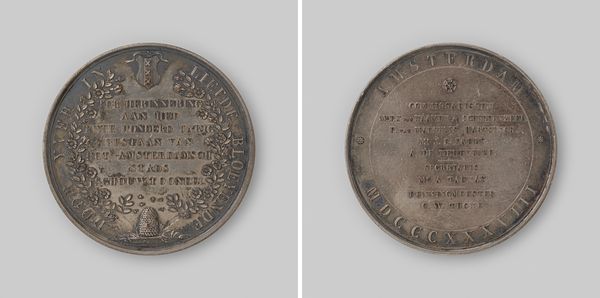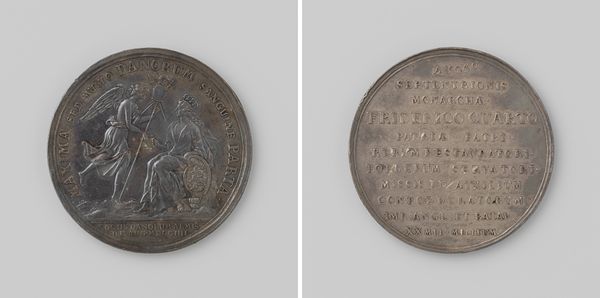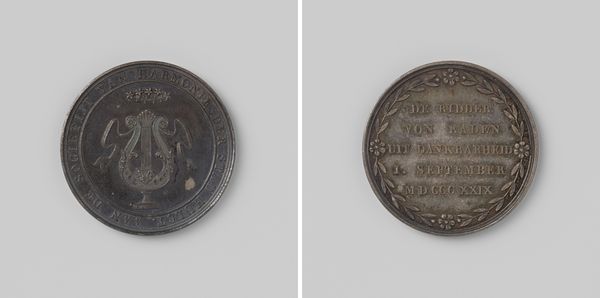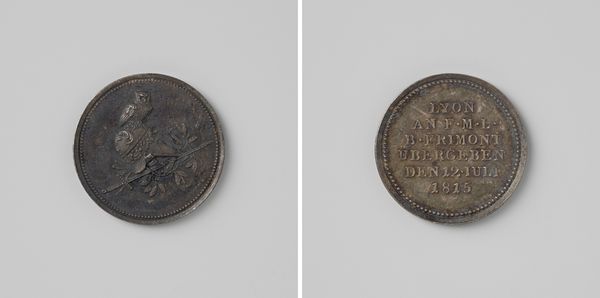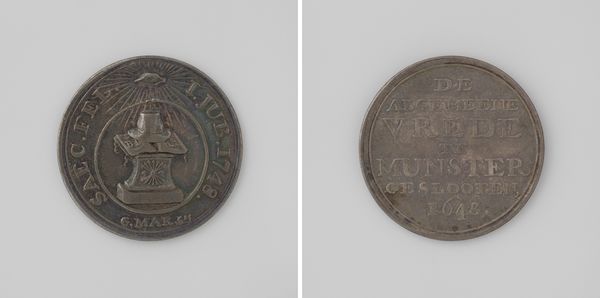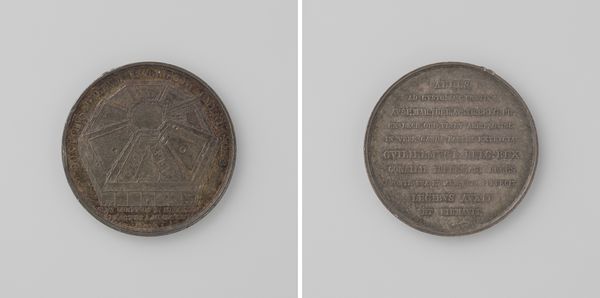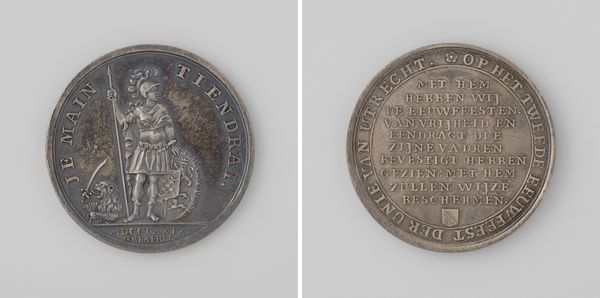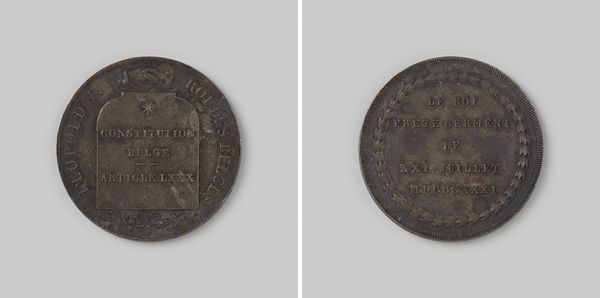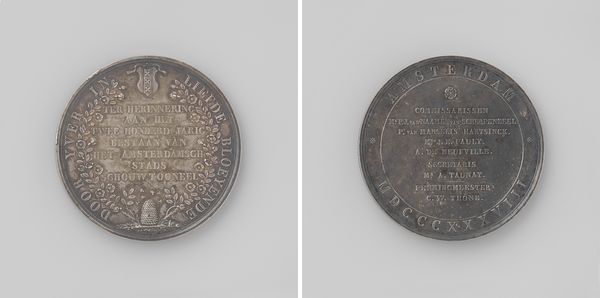
metal, sculpture, engraving
#
narrative-art
#
baroque
#
metal
#
sculptural image
#
sculpture
#
history-painting
#
engraving
Dimensions: diameter 3.2 cm, weight 10.85 gr
Copyright: Rijks Museum: Open Domain
Editor: So, here we have a piece titled "Op de actiehandel. De podagra van de Franse beurs," or "The podagra of the French Stock Exchange," dating back to 1720. It's an engraving on metal, housed in the Rijksmuseum. It strikes me as quite intricate for something so small. What stands out to you? Curator: This medal isn’t just intricate, it’s a material document of a specific moment in economic history, made to be widely circulated. I see here a critique of early financial speculation, likely commenting on the South Sea Bubble or the Mississippi Company bubble. Look closely – you have classical figures alongside references to modern finance, a pointed contrast using a rather durable, costly material: engraving on metal. How do you think the choice of metal affects its reception? Editor: That's interesting, the contrast you mention. I hadn’t considered the medal itself as part of the message. Metal seems like an odd choice if you are critiquing the subject matter of financial bubbles. Surely paper, vellum or even wax would have worked to underline that very sense of ephemerality. What social impact might such material choice have intended at the time? Curator: Precisely. Using metal transforms the critique. Instead of being a fleeting commentary, the material permanence gives the criticism a lasting weight. It's a means of disseminating this criticism across society. And engravings meant a capacity to quickly replicate the piece, amplifying reach, impacting discourse and the distribution of information about nascent financial products, at this precise historical moment of Dutch power and trade dominance. The materiality is central to its function. Editor: So, it’s less about the beauty of the metal and more about the means of disseminating a message about financial risk. It's like using social media today, only the ‘medium’ is this physical object with inherent connotations. Curator: Exactly. We are drawn into considering labor practices involved in mining, processing, engraving. It pushes beyond aesthetic contemplation to social awareness. It challenges traditional definitions about "fine" art and craft, showing it is material culture intended to shift discourse at a vital time of change. Editor: I see how analyzing the medium can reveal the artwork’s social context and intentions so clearly! Thank you for broadening my perspective on the "narrative".
Comments
No comments
Be the first to comment and join the conversation on the ultimate creative platform.
